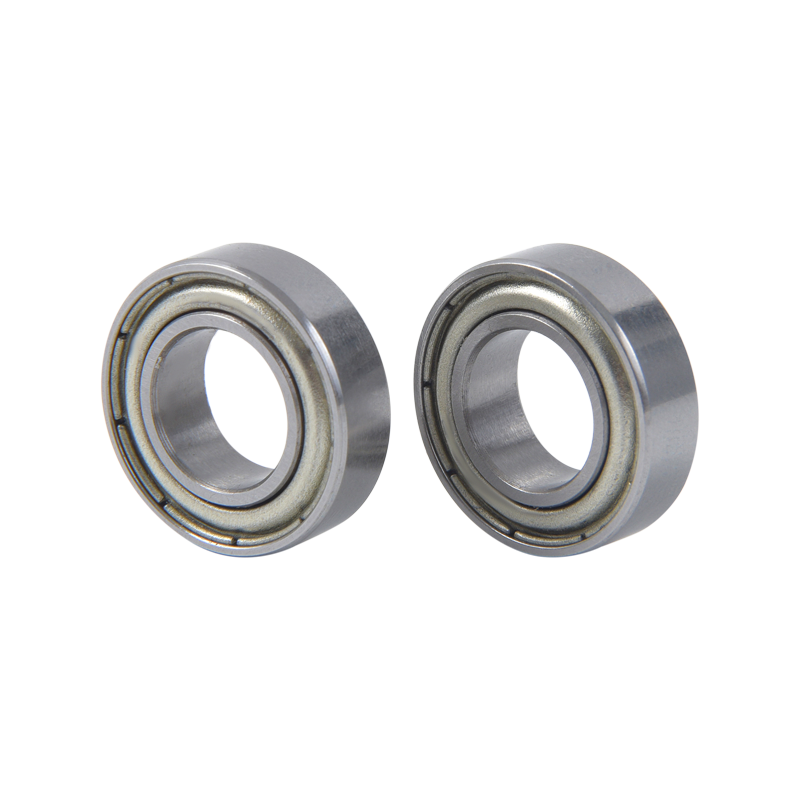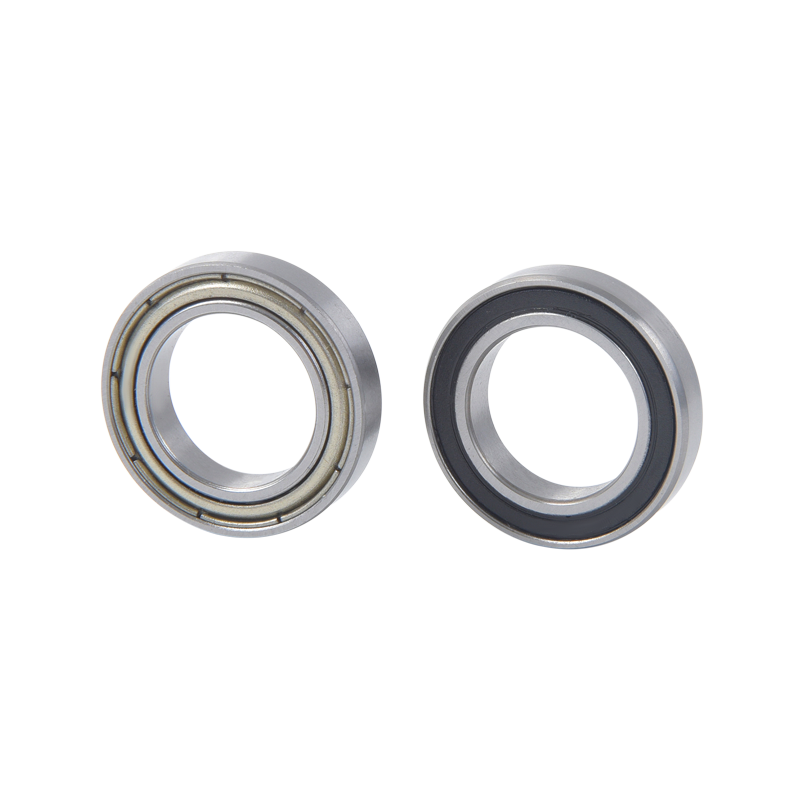The load-bearing capacity of deep groove ball bearings is determined by multiple factors such as its structure, materials and manufacturing accuracy.
The basic structure of a deep groove ball bearing is composed of an outer ring, an inner ring, a set of steel balls and a cage. This exquisite structural design not only ensures that the bearing can operate stably, but also gives it the ability to withstand a certain load. The outer ring and inner ring are the main parts of the bearing. They are installed on the shaft of the mechanical system and in the bearing seat respectively with appropriate fits. The space between the inner and outer rings provides a place for the steel balls to move. These steel balls are evenly distributed between the inner and outer rings. They can roll freely under the action of external forces and are restrained by a cage to ensure that they will not fall off during operation. The cage plays the role of fixing the position of the steel balls. It enables the steel balls to maintain a stable arrangement during operation and prevents mutual collision and friction between the steel balls. At the same time, the design of the cage also takes into account the contact between the steel ball and the inner and outer rings to minimize friction loss. In addition to the above basic structure, the load-bearing capacity of deep groove ball bearings is also affected by radial clearance and groove rate radius. Radial clearance refers to the gap between the inner ring and the outer ring of the bearing when it is not acted upon by external forces. Appropriate radial clearance allows the bearing to have a certain deformation space when it bears axial load, thereby enhancing its ability to bear axial load. The groove rate radius refers to the radius of curvature of the rolling path of the steel ball inside the bearing. A larger groove ratio radius means the steel ball is less constrained as it rolls, allowing for smoother load transfer. This design helps reduce friction and wear of the bearing during operation, thereby increasing its load-bearing capacity and service life.
Secondly, the selection of bearing materials plays a vital role in determining its load-bearing capacity. As the key components of bearings, the selection of materials for rings and balls is particularly critical. Typically, they are manufactured from high carbon chromium bearing steel. This special steel is carefully smelted and processed to provide excellent wear resistance and strength. The wear resistance of high-carbon chromium bearing steel means that the surface of the bearing is less prone to wear during long-term operation, thus maintaining a stable friction coefficient and accuracy. This ensures that the bearing can still maintain its original performance when subjected to heavy load or high-speed operation, extending the service life of the bearing. At the same time, the high strength characteristics of high-carbon chromium bearing steel enable the bearings to withstand larger loads. When subjected to external forces, the bearings are not prone to deformation or breakage, thus ensuring the stability and reliability of the mechanical system. In addition to rings and balls, the material selection of the cage is also an important factor affecting the load-bearing capacity of the bearing. The cage is usually made of low carbon steel. This material has good plasticity and toughness, and can provide a certain deformation ability while ensuring strength to adapt to minor changes in the bearing's operation. However, in some special applications, such as high temperature, high humidity or corrosive environments, the material of the cage may need to be more special. For example, materials such as brass plates or stainless steel plates may be used to make cages to cope with harsh working environments. These materials have excellent corrosion resistance and high temperature resistance, ensuring that the bearings can still operate normally under these special conditions.
Forging is a basic step in bearing manufacturing. At this stage, the raw materials are heated and shaped at high temperatures to form the basic shape of the bearing. Temperature control, pressure application and shaping speed during the forging process all directly affect the internal structure and performance of the bearing. Proper forging process can ensure that the bearing has a uniform grain structure and tight organization, laying a solid foundation for subsequent processing and assembly. Next is the heat treatment step. Heat treatment adjusts the properties of bearing materials by controlling the heating and cooling processes. It can eliminate the internal stress generated during the forging process, improve the hardness and toughness of the material, and make the bearing more wear-resistant and durable. Parameters such as temperature, time and cooling methods during the heat treatment process need to be precisely controlled to ensure that the bearings achieve optimal mechanical and physical properties. Finishing is one of the key steps in manufacturing deep groove ball bearings. At this stage, various parts of the bearing require fine cutting, grinding and polishing to achieve precise size and shape. The accuracy of finishing directly determines the assembly quality and operating performance of the bearing. High-precision processing equipment, advanced cutting technology and strict quality control systems are the keys to ensuring bearing manufacturing accuracy. In addition, precision control during the assembly process is equally important. The inner and outer rings, steel balls, cages and other components of the bearing need to be assembled according to strict tolerance requirements to ensure smooth operation, low friction and slow wear of the bearing. Precise measurement and calibration during assembly are key to ensuring bearing load-carrying capacity.
To sum up, the load-bearing capacity of deep groove ball bearings is determined by multiple factors such as its structure, materials, manufacturing accuracy, and stress conditions. In practical applications, we need to select appropriate bearing types and specifications based on specific working conditions and requirements to ensure good load-bearing capacity and service life.
- [email protected]
- +86-15706849036
- Home
- About Us
- Products
- Flanged Ball Bearing Series
- In Inch Flanged Ball Bearing Series
- 6000 Series Deep Groove Ball Bearing
- 6200 Series Deep Groove Ball Bearing
- 6300 Series Deep Groove Ball Bearing
- 6700 Series Deep Groove Ball Bearing
- 6800 Series Deep Groove Ball Bearing
- 6900 Series Deep Groove Ball Bearing
- 1600 Series Deep Groove Ball Bearing
- 16000 Series Deep Groove Ball Bearing
- Unstandard Series
- MR Series
- In Inch R Series
- In Inch RLS Series、RMS Series
- In Inch EE Series
- Micro Precise Deep Groove Ball Bearing Series
- News Center
- Contact Us
-











 No. 7, Tangchuang Garden, Yangshan Village, Di Tang Street, Yuyao City, Ningbo City, Zhejiang Province, China.
No. 7, Tangchuang Garden, Yangshan Village, Di Tang Street, Yuyao City, Ningbo City, Zhejiang Province, China.
 +86-15706849036
+86-15706849036 +86-0574-63267578
+86-0574-63267578 +86-0574-63265856
+86-0574-63265856
